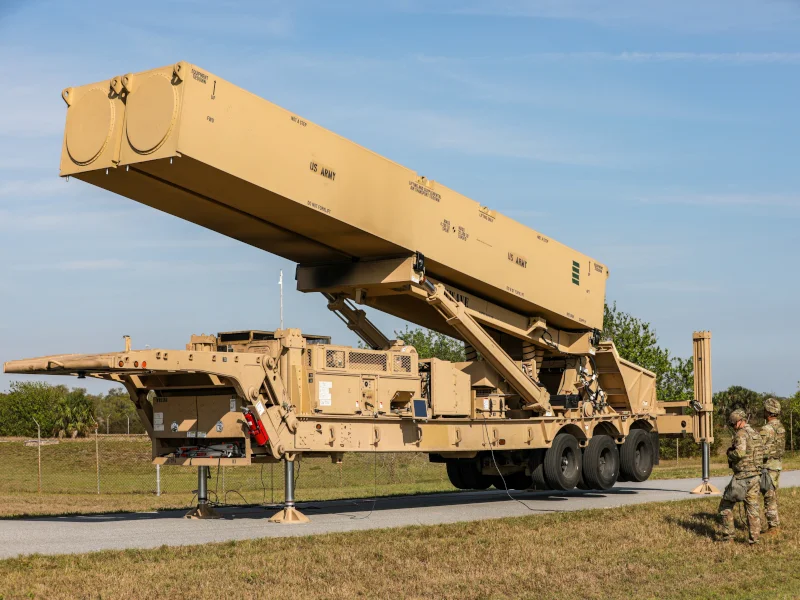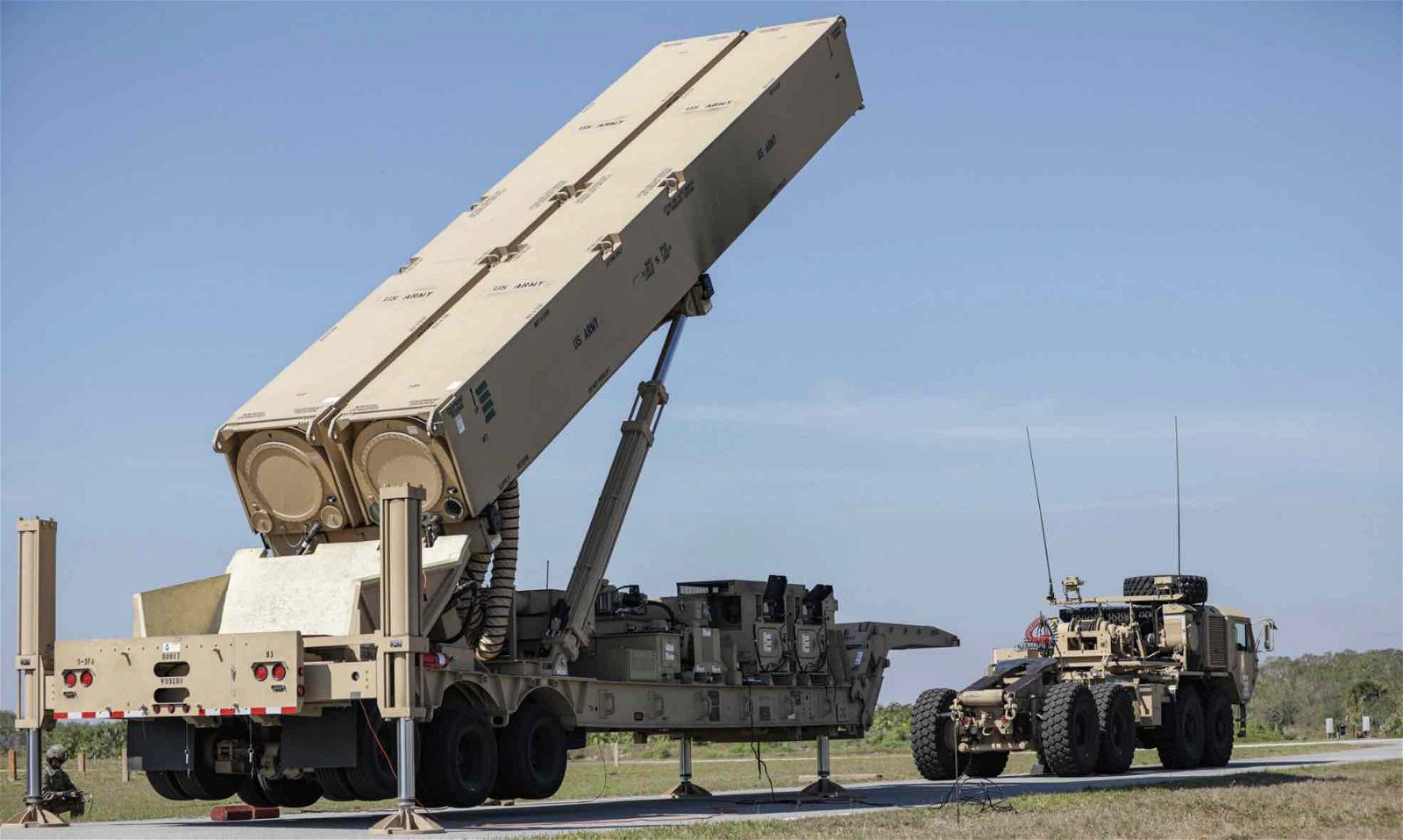The U.S. Navy is reportedly preparing to test a hypersonic weapon as part of a joint developmental program with the U.S. Army, which aims to unleash the military’s Long-Range Hypersonic Weapon (LRHW) capabilities.
“The Army is working closely with the Navy in the development of the LRHW,” according to a recent Congressional Research Service (CRS) report. “LRHW is comprised of the Common Hypersonic Glide Body (C-HGB), and the Navy 34.5-inch booster.”
The forthcoming test will involve the C-HGB, which relies on the Navy’s booster rocket motor to propel the weapon to hypersonic speeds. Once the rocket is ejected, the C-HGB can glide at speeds of Mach 5 or greater. The missile is designed to be highly maneuverable, which helps ensure it remains difficult to detect and intercept before reaching its destination.
The news of the forthcoming test follows plans the Navy revealed late last year to upgrade several of its warships with a series of 87-inch missile tubes, each capable of housing three C-HGB hypersonic missiles, for a total of 12 per ship. The missile tubes will replace the twin 155 mm Advanced Gun Systems that are currently equipped for each of the Navy vessels.
The Common Hypersonic Glide Body (C-HGB)
The C-HGB is the outgrowth of technologies that are more than a decade in the making, originally part of the Alternate Re-Entry System developed by the Army and designed by Sandia National Laboratories in the early 2010s.
Production of the C-HGB for the Army and the Navy has been underway for several years in cooperation with Dynetics, a subsidiary of Leidos, who was contracted to develop the prototypes. Dynetics’ development of the C-HGB prototypes marks the first time that a domestic private sector entity has been tasked with building hypersonic weapons.
“The LRHW system provides the Army a strategic attack weapon system to defeat Anti-Access/Area Denial (A2/AD) capabilities, suppress adversary long-range fires, and engage other high payoff/time critical targets,” the recent CRS report read.
Earlier this week at the recent Association of the U.S. Army’s Global Force Symposium, Lt. Gen. Robert Rasch told Defense News that the test would not involve the Army’s ground support equipment but would instead be “a stool launch” that would provide the military “another look at the missile.”
Dark Eagle: A Closer Look
Known as Dark Eagle, the Army says its LRHW will be capable of reaching targets within a range of 1,725 miles and reportedly traveling at speeds exceeding 3,800 miles per hour.
After being fired from the Army’s portable ground-based launch units, Dark Eagle can climb high into Earth’s atmosphere, where it remains beyond the reach of air and missile defense systems until it nears its target.
Following the Navy’s initial C-HGB test this spring, the Army plans to conduct a test later this summer from its ground-based truck-launched system, with weapon system integration performed by Lockheed Martin. The Army has organized the LRHW launch systems into batteries consisting of four Transporter Erector Launchers, which are fitted to modified M870A4 trailers.


“The M870A4 SEMITRAILER is a 40-ton payload, mechanical folding gooseneck, level-deck trailer with rear ramps capable of handling payloads on primary, secondary, and trail profile roads,” states an unclassified 2019 U.S. Army Budget Line Item Justification. Although originally designed for the transport of large construction equipment, the modified trailers are equipped to house the Army’s Transporter Erector Launchers.
Each trailer features two AUR+Cs with a single Battery Operations Center (BOC) for command and control and a BOC support vehicle. According to the December CRS report, the first battery of eight LRHW missiles is to be operated by a Strategic Long-Range Fires battalion under the 5th Battalion, 3rd Field Artillery Regiment at Joint Base Lewis-McChord, Washington.
In the future, additional LRHW batteries will be assigned to other Strategic Long-Range Fires battalions within the Army’s 1st Multi Domain Task Force (MDTF).
The Hypersonic Weapons Race
Presently, the U.S. is racing against similar hypersonic developments being undertaken by Russia and China, who have been actively testing similar weapons capabilities for years.
Earlier this month, it was revealed that the U.S. Air Force conducted a test with a prototype hypersonic missile in the Marshall Islands. Formally known as the AGM-183, the missile is an air-launched rapid response weapon (ARRW), a type of hypersonic air-to-ground missile that was the result of a $480 million contract granted to Lockheed Martin in 2018.
Although initial tests began in June 2019, the program was officially canceled last spring following a series of setbacks. However, additional testing that was initially undisclosed to the public continued, and late last year, the first official launch of a full prototype operational AGM-183 occurred at a test range off the Southern California coast.


Last year, the Army and the Navy were met with setbacks of their own, which resulted in the postponement of tests originally scheduled for last March, as well as subsequent Navy and Army tests planned for October and November.
Despite last year’s test cancellations, Lt. Gen. Rasch said that if the Navy’s tests this spring meet their anticipated objectives, the Army will proceed with assembling its own capabilities, which he says are “ready to go” and in varying stages of completion.
Following the Army’s tests later this year, the new LRHW systems will be delivered to the initial Strategic Long-Range Fires battalion at Joint Base Lewis-McChord and thereafter to additional units as they become equipped with the required ground-based launch systems.
Micah Hanks is the Editor-in-Chief and Co-Founder of The Debrief. He can be reached by email at micah@thedebrief.org. Follow his work at micahhanks.com and on X: @MicahHanks.

